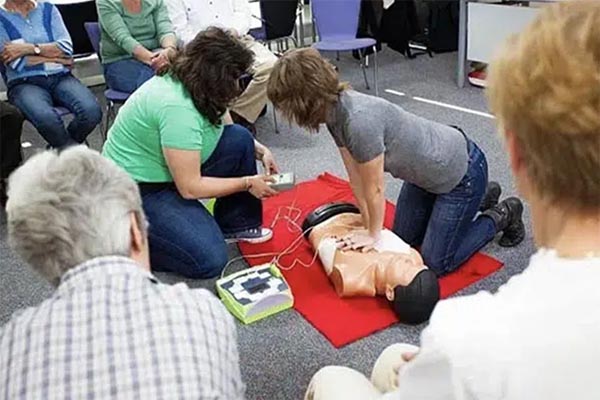
Flying thousands of feet above the ground, hundreds of passengers place their safety and wellbeing in the hands of flight attendants. While their role often focuses on customer service, their primary responsibility is ensuring safety, especially during emergencies. This is why CPR (Cardiopulmonary Resuscitation) and AED (Automated External Defibrillator) training is absolutely crucial for flight attendants. Understanding these life-saving techniques not only boosts their confidence but also prepares them to handle critical medical situations onboard.
In this blog, we’ll explore why CPR and AED training are indispensable for flight attendants, how these skills can make a difference, and why getting certified nearby is easier and more important than ever.
Imagine a passenger suddenly collapsing mid-flight, showing no signs of breathing or a pulse. With the aircraft miles above the nearest hospital, immediate action can be the difference between life and death. CPR helps maintain blood flow to vital organs, while an AED can restore a normal heartbeat with an electric shock.
Flight attendants are often the first, and sometimes only, responders in such emergencies until the plane lands or medical professionals can take over. Their ability to perform CPR and use an AED quickly and correctly is a lifeline for passengers experiencing cardiac arrest or other medical emergencies.
Airlines require flight attendants to be trained in emergency procedures, including CPR and AED use, because they are uniquely positioned to act swiftly during a crisis. Their duties include:
Being prepared with these skills builds trust and assurance for passengers who depend on their expertise when seconds count.
Performing CPR in an airplane cabin is different from doing so on solid ground. Flight attendants face cramped spaces, turbulence, and limited medical resources. That’s why specialized training that simulates inflight conditions is essential.
Moreover, AEDs onboard are designed for quick deployment, but they require confidence and familiarity from users. Proper training ensures flight attendants can operate these devices without hesitation, even under pressure.
Effective CPR and AED training includes:
Many professional CPR certification programs tailor their curriculum for flight attendants, addressing the specific challenges of the aviation environment.
Getting certified close to home or work saves time and money, allowing flight attendants to fit training conveniently into busy schedules. Local classes often provide personalized instruction and smaller group sizes, which enhance learning outcomes.
Moreover, nearby classes can offer flexible scheduling options, weekends, evenings, or intensive courses, making certification accessible for professionals who travel or work irregular hours.
For flight attendants, CPR and AED training is not just another certification, it’s a critical skill set that can save lives every time the plane takes off. Whether it’s a sudden cardiac arrest or another medical emergency, being prepared makes all the difference.
If you’re a flight attendant or airline professional, don’t wait to get certified. Enhance your safety skills and ensure you’re ready to protect your passengers in any situation.
Contact CPR Classes Near Me today to find convenient, expert-led CPR and AED training programs designed for flight attendants. Your readiness could save a life.
Our primary goal is to ensure that you receive a top-quality CPR/First Aid certification. With our in-person training in Austin, you can learn CPR and BLS in just one class. Your presence is all that’s needed to continue with your lesson! During your session, you will complete all the live-training components necessary to ensure you receive your AHA Healthcare Provider certification card.
Our CPR Classes in Austin are discounted to $59.95 (saving you $20), and our CPR + First Aid Class is offered at $79.95 (also saving you $20). When looking for CPR Classes, ensure to check for the American Heart Association seal. Other sites might seem cheaper but frequently lack the official training credentials demanded by employers.
Upon successful completion of the course, you will obtain a CPR certification that is valid for two years. The AHA CPR certification is recognized with the highest acceptance rate among employers nationwide.
Indeed! Enroll in any CPR Certification Austin BLS course to extend your certification for an additional two years. The in-person BLS course and the Renewal Class are identical.
Anyone capable of completing the course independently should consider pursuing CPR training and CPR Certification. There is no minimum age restriction for obtaining a CPR certification in Austin through the American Heart Association (AHA)..
CPR training needs to be carried out in person to guarantee its effectiveness. Our experienced instructors offer an engaging and dynamic learning experience. Typically, employers do not recognize CPR certifications that are obtained solely through online courses.
All authorized American Heart Association training centers are obligated to display the entire video. After a three-hour session with CPR Classes Near Me Austin, your BLS CPR eCard will be promptly issued by the instructor on the same day!